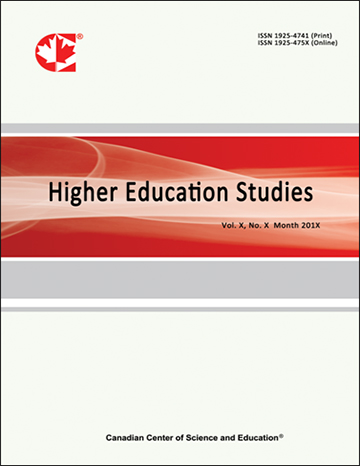How Well Does Undergraduate Education Prepare College Students for the Employment Outlook? A Secondary Data Analysis of Baccalaureate and Beyond Longitudinal Study (B&B)
- Liyun Wu
- Marilyn W. Lewis
Abstract
The trajectory of successfully completing an undergraduate educational program, attaining postgraduate employment, and beginning advanced degree programs was examined using the Baccalaureate and Beyond Longitudinal Study (B&B: 2008/2012), a large U.S. nationally representative longitudinal sample survey of college graduates who completed the requirements for a baccalaureate degree. The third cohort of this longitudinal study was used to compare participants’ status at the time of graduation and four years post-graduation. It was hypothesized that graduates whose post baccalaureate employment experiences related to their baccalaureate majors would be more likely to enroll in additional advanced degree studies, and that the post-baccalaureate field of study would be similar to the undergraduate major among those who pursued a graduate degree. Race, gender, disability, and immigration status were entered as control variables. Findings show that within two years, 42.1% of graduates had initiated postsecondary education. These data indicate that graduates were more likely to pursue degrees which were similar to their baccalaureate degree majors. If their bachelor degree majors were health professions, the likelihood that they pursued graduate-level health professional training and related sciences were highest (p<.001). By attending and finishing college, baccalaureate degree recipients heavily invest in their career by using their financial and non-financial resources. College students with fewer resources are less likely to successfully graduate, attain post-graduate employment in their field, and pursue post-baccalaureate studies. Instituting a competency-based curriculum in baccalaureate programs may improve opportunities for students to gain successful employment experiences, increase labor market outcomes, thus narrowing the divide between students with and without financial and non-financial resources.
- Full Text:
 PDF
PDF
- DOI:10.5539/hes.v9n4p181
Index
- AcademicKeys
- CNKI Scholar
- Education Resources Information Center (ERIC)
- Elektronische Zeitschriftenbibliothek (EZB)
- EuroPub Database
- Excellence in Research for Australia (ERA)
- Google Scholar
- InfoBase
- JournalSeek
- Mendeley
- Open Access Journals Search Engine(OAJSE)
- Open policy finder
- Scilit
- Ulrich's
- WorldCat
Contact
- Sherry LinEditorial Assistant
- hes@ccsenet.org
